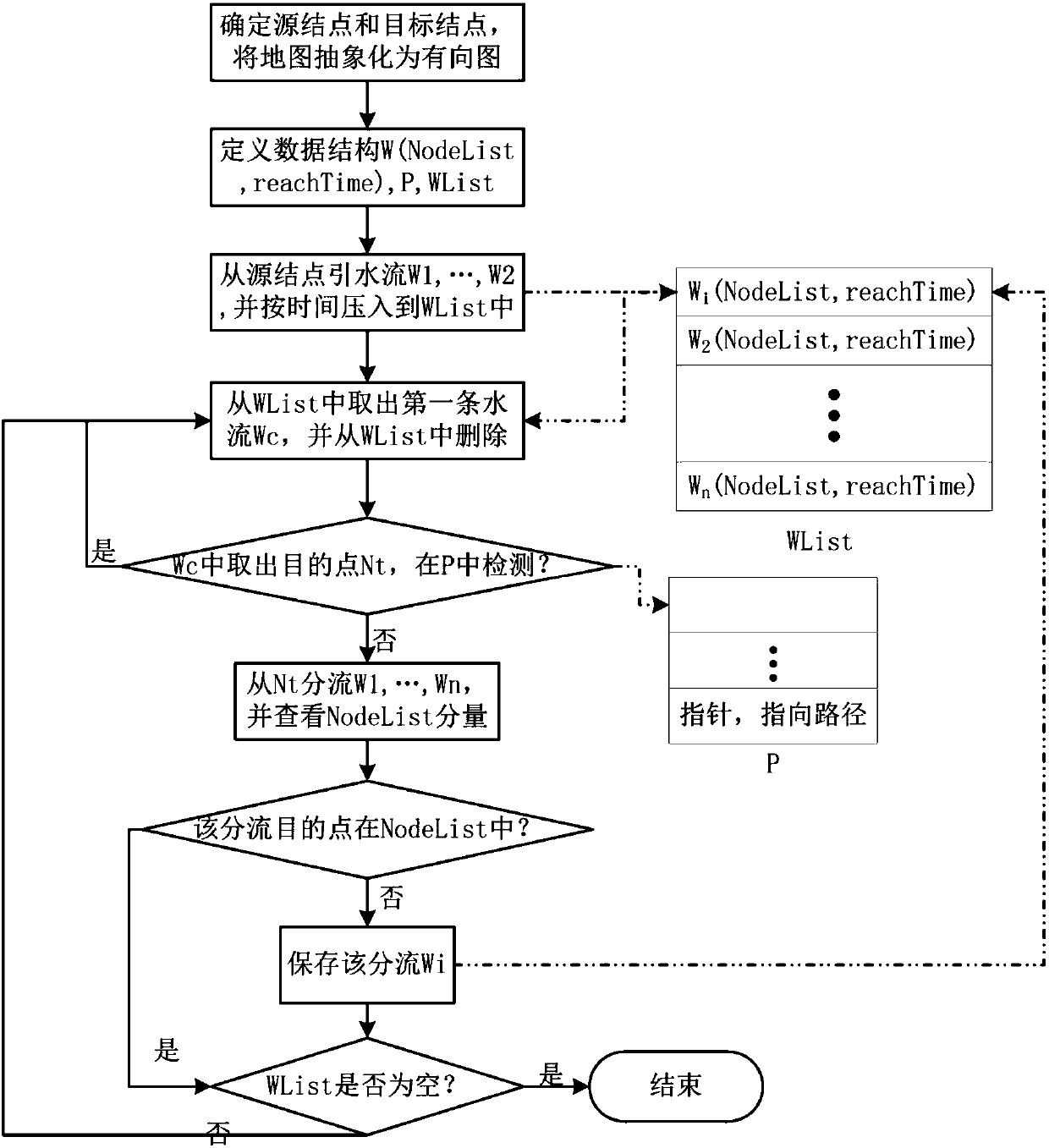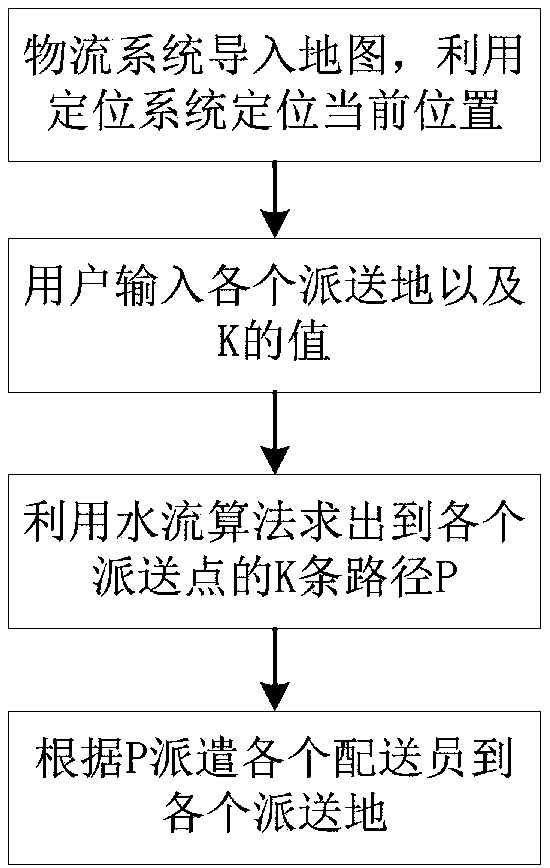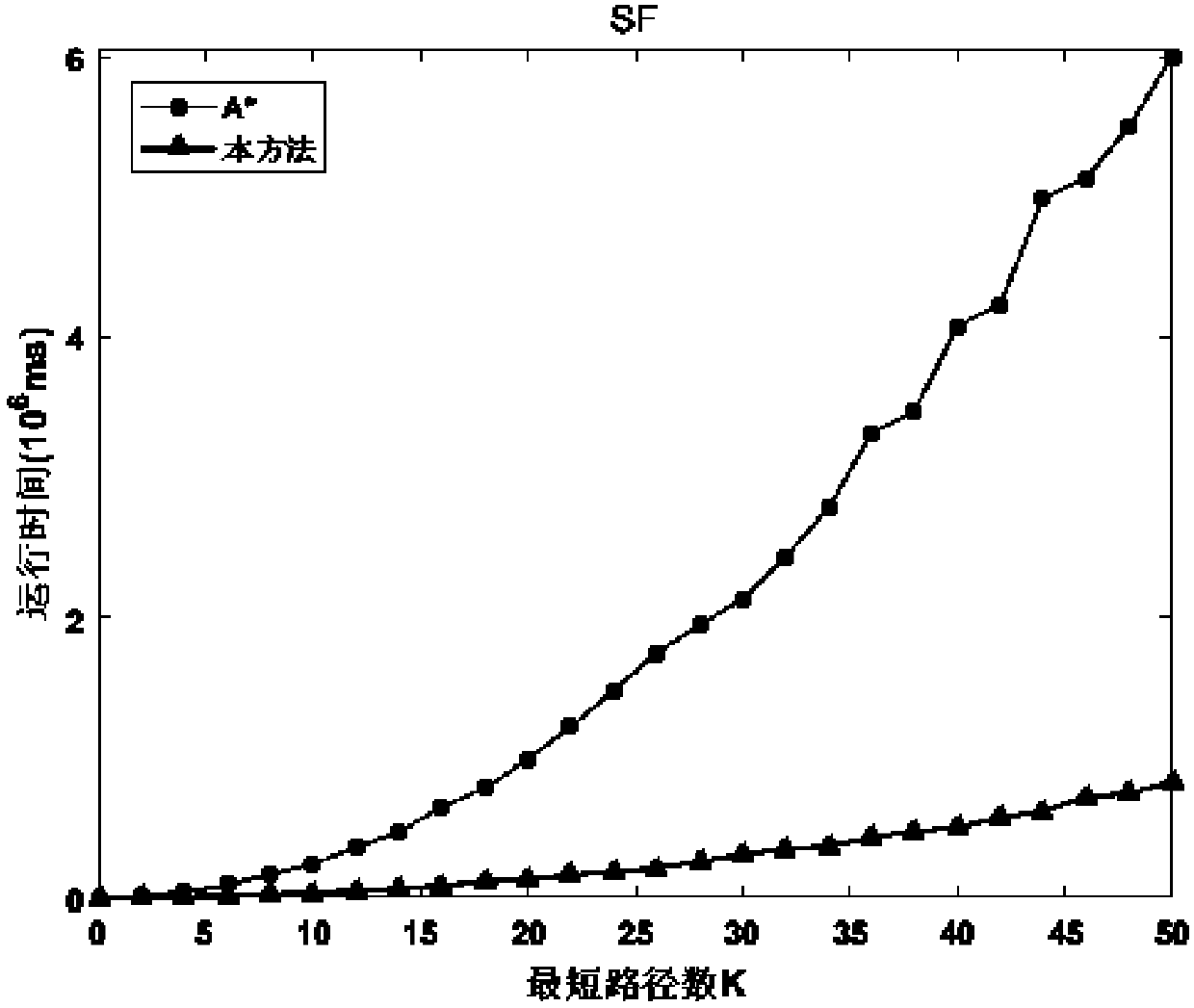Method for quickly searching multiple shortest paths
A shortest path and path technology, applied in the field of computer networks, can solve the problems of complex calculation, inability to effectively avoid loops, and low actual use value, and achieve the effect of low time complexity and interference avoidance.
- Summary
- Abstract
- Description
- Claims
- Application Information
AI Technical Summary
Problems solved by technology
Method used
Image
Examples
Embodiment 1
[0059] refer to figure 2 , is an application example of the present invention, which is applied to a single-source and multiple-destination logistics scheduling system.
[0060] Import the map to determine the current location of the user; input each delivery place and the value of K; use the water flow algorithm proposed by the present invention to find out the K shortest paths from the starting point to each delivery point; assign each delivery member according to the obtained path, and start Express delivery.
[0061] Specific examples are as follows:
[0062] Import the map, the user determines that the source node is A and each destination node is B, C, D, assuming that the number K of the shortest path to be found is 2, an abstract directed graph is obtained, and the directed graph is saved by an adjacency matrix. The details are shown in the storage structure of the network graph in Table 2:
[0063]
A
B
C
D
A
0
1
3
0
B ...
PUM
 Login to View More
Login to View More Abstract
Description
Claims
Application Information
 Login to View More
Login to View More - R&D
- Intellectual Property
- Life Sciences
- Materials
- Tech Scout
- Unparalleled Data Quality
- Higher Quality Content
- 60% Fewer Hallucinations
Browse by: Latest US Patents, China's latest patents, Technical Efficacy Thesaurus, Application Domain, Technology Topic, Popular Technical Reports.
© 2025 PatSnap. All rights reserved.Legal|Privacy policy|Modern Slavery Act Transparency Statement|Sitemap|About US| Contact US: help@patsnap.com



